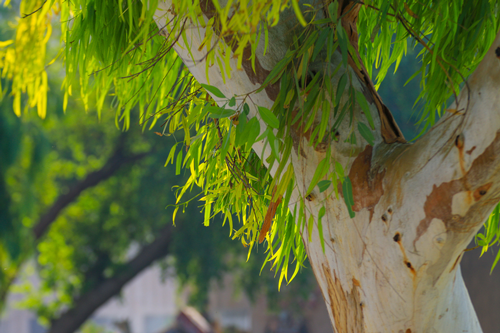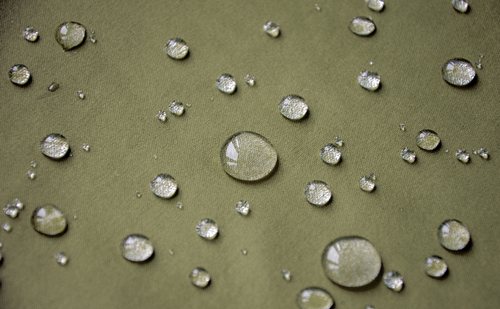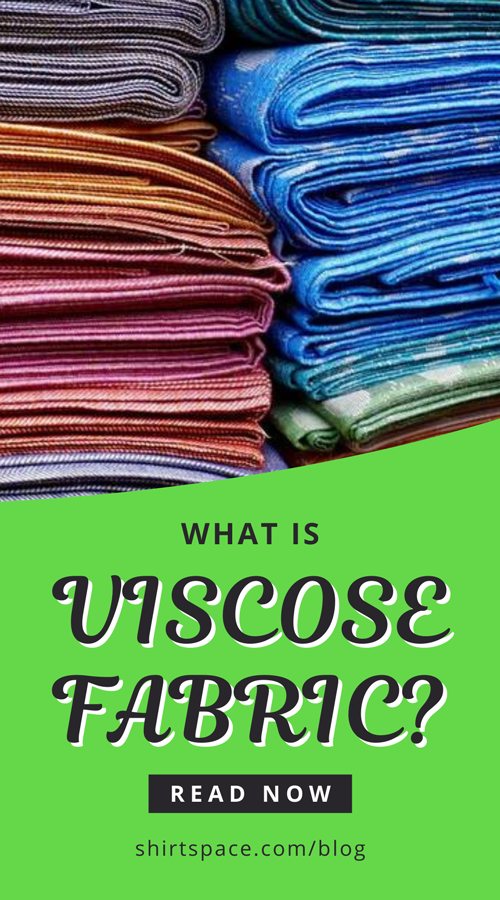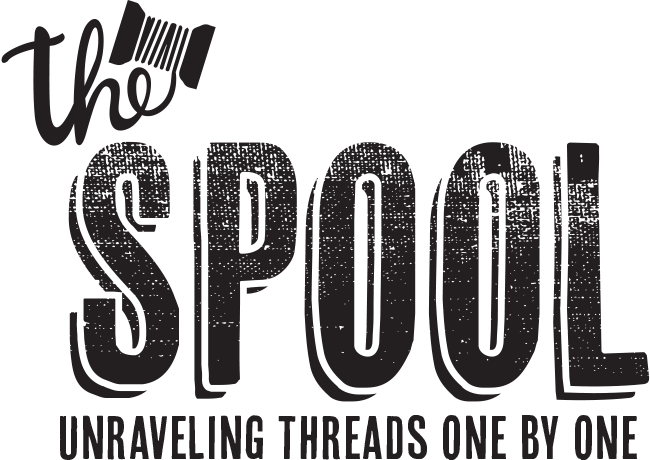
What is Viscose Fabric?
By ShirtSpace | Aug 23, 2019 | Updated Mar 12, 2024
It’s clear as day that cotton dominates the blank apparel industry. It is a soft and fluffy material that is comfortable in any linen, whether it’s for everyday wear or your favorite bedsheets. But even though it’s the most popular fabric in the world, other materials have started to gain traction as well.
Among those cotton alternatives is viscose. Viscose shirts are a form of rayon material that can imitate the look and feel of other materials, including cotton, polyester, modal, and even silk. This material is skyrocketing in popularity thanks to its low cost and semi-sustainable reputation. As such a great alternative, you might be wondering: exactly what is viscose fabric?
What Is Viscose
Viscose is an inexpensive, semisynthetic fabric closely related to rayon. This fabric is made from wood pulp, which is the result of wood fiber that is chemically reduced to pulp-like cellulose solution. It is often used to manufacture paper, but it can also be used to make fabrics like rayon and viscose. During the process, wood pulp is dissolved and regenerated in the form of fibers. This process terminates cellulose pulp so that the final cellulose solution is spun into a fine thread, resulting in viscose material.
This is a great option if you are looking for a bang for your buck. Viscose is relatively inexpensive, however it gives off more of a deluxe look. With its added soft feel and great drape, this option is a winner when it comes to wanting these characteristics of a garment. Check out Bella+Canvas and their extensive selection of apparel made with viscose!

Is Viscose Natural?
Offering sought-after draping qualities and easily blended with other fabrics, viscose material is neither natural nor synthetic. Like rayon, its close cousin, viscose’s raw material is cellulose, which is derived almost exclusively from wood pulp from trees. The cellulose is broken down either chemically or mechanically and is reformed into fibers that are used to make t-shirts and apparel. So, it is not entirely natural like cotton or silk—but is also not wholly synthetic like nylon or polyester.
What is Viscose Fabric
Viscose fabric is like a combination of our top two favorite fabrics. It is breathable and lightweight like polyester, is soft and keeps its shape like cotton, and is strong and durable. Due to its fabric makeup, it has a good resistance to fading and can take on multiple launder cycles.
With fabrics like polyester and modal already serving as an excellent, less expensive alternative to cotton, you might wonder why viscose has such an apparent presence. Here’s why: although the fabrics might seem similar, the differences are quite significant.
Viscose vs. Polyester
Viscose material is famously water-absorbing, while polyester is water-repelling. This makes polyester an excellent wicking fabric and serves as a good material for protection. Polyester is primarily used as a fabric for bags and hats to help repel water and sweat.

But as a water-absorbing fabric, viscose has several advantages. Thanks to its water-absorbing characteristic, viscose is a highly breathable material. Breathable materials help remove water and heat from your skin so that you can feel dry and comfortable. This makes viscose an excellent fabric for any summertime clothing, as well as working out, dresses, bedsheets, and even undergarments.
Viscose vs. Modal
Both viscose and modal are plant-based, and the manufacturing processes are very similar—but only up until a certain point. Wondering, what is Modal fabric? Modal fabrics are stretched so that its filaments are stronger, which translates to a more durable material that requires less special care. Even so, viscose is a more attractive fabric since it has an element of shine that modal can’t replicate.
Caring For Viscose Material
In most cases, viscose t-shirts will require some delicate care. Viscose clothing may be flexible in the fact that it can imitate other materials, but it may get ruined without proper cleaning methods. You’ll likely have to hand-wash or dry-clean this fabric, so you shouldn’t throw it in the laundry with your other clothing.

Some simple steps to washing your viscose t-shirts would be:
-
Hand wash with mild detergent, allowing the material to soak for up to 30 minutes
-
Rinse the garment with cold water until all soap and suds are gone
-
Squeeze out any excess water so that the clothing is damp
-
Place the garment in a thick cotton towel and roll it up, so that excess water gets absorbed
-
Hang the clothing on a drying rack to air dry (or on a padded hanger to drip-dry)
Since viscose is water-absorbing, getting rid of any excess moisture is essential. As it dries, try to eliminate any wrinkles by straightening out and reshaping the fabric.
How Viscose Came To Be
Although French scientist and industrialist Hilaire de Chardonnet invented the first artificial textile fiber rayon, it was English chemist Charles Cross and his collaborator John Bevan who made viscose what it is today. Before their development, rayon was extremely flammable—but their new viscose process created a safe alternative.
After the safe process was discovered, Cross and Bevan took out the British Patent No. 8,700 (called “Improvements in Dissolving Cellulose and Allied Compounds”) in 1892. Patented as the first safe “artificial silk,” viscose made its commercial debut in the early 20th century. Since then, viscose has become one of the most popular materials for fabrics of all kinds.
How Does Viscose Hold Up?
Viscose material is unique because of its absorbent and lightweight material. Most impressively, it’s captured the attention of mass-manufacturers because of its ability to emulate the look and feel of more expensive fabrics. But, as with any material, there are several pros and cons to consider before buying for your own wardrobe.
Benefits of Viscose
-
Less expensive than luxury fabrics
-
Can imitate other fabrics’ look and feel
-
Very breathable material
-
Dyes easily and blends well with other fabrics
Disadvantages of Viscose
-
Almost always has to be dry-cleaned or hand-washed
-
The structure is weaker than other fabrics and is prone to stretching
-
Absorbs body oils like sweat
-
Viscose is considered an unsustainable material because of its manufacturing process
Environmental Factors of Viscose Clothing
To make viscose clothing wearable and durable, it has to be chemically treated with softeners like ammonia, acetone, and sulphuric acid. Often, the fumes are released into the air, and toxic runoff may affect surrounding areas. So although viscose comes from a natural source, its chemical process is highly hazardous to the environment and the people around manufacturing plants.
However, viscose is slowly being made using a different process, called the Lyocell process. This uses a different chemical as a solvent which produces little waste, thus becoming more sustainable through its manufacturing.
Find Viscose Shirts For You
Soft like cotton and figure-flattering too, viscose fabric is an affordable option that is generally blended with other fabrics. It is easily dyed and lends itself well to bright, vibrant colors. Growing in popularity, viscose is a material that is worth getting to know and love.
At ShirtSpace, you can find a wide variety of viscose t-shirts that are sure to fit your every need. Check out what we have for you today!




Comments
Larry09/06/2022 07:36 pm
Great
Reply
ShirtSpace09/07/2022 03:00 pm
Thanks, Larry! We are glad you enjoyed it!
Reply
Patty08/07/2022 01:21 pm
Why do you say polyester fabric is breathable and cool ? It's the hottest fabric to wear.,
Reply
ShirtSpace08/18/2022 06:59 pm
Hi, Patty! We should have certainly been more specific about the type of polyester we are referencing, because not all polyester is created equal! For instance, a stiff polyester button up work shirt or winter coat’s water-resisting outer shell are both insulating and hot fabrics to wear that do not breathe well. But stretchy athletic wear polyester tends to have the opposite effect when it comes to heating and cooling. Here is an article that explains the phenomenon. We would like to thank you for bringing this to our attention, for we will shift our speech to be more specific to which type of polyester we are describing in our educational content. Thank you for reading our blog, and feel free to reach out to our Customer Service Team if you have any further insights, questions or need assistance.
Reply
Leave a Comment
We take your privacy seriously and will not share or publish your email address.
This site is protected by reCAPTCHA and the Google Privacy Policy and Terms of Service apply.